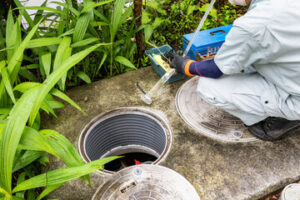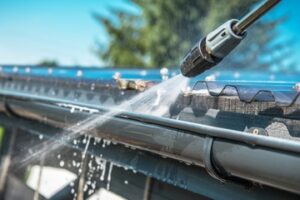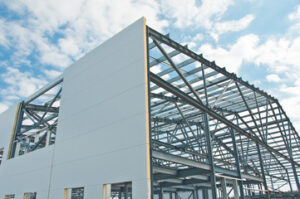Your roof is a major investment and needs to be maintained and cared for properly. This can be done with regular tune-ups or maintenance service programs that include inspection, cleaning, and addressing minor issues.

These tasks can prevent problems from escalating into expensive structural failures and keep building occupants safe. A few important areas to focus on are the flashing, gutters, and attic. Click Here for more information.
A roof’s flashing is a crucial element, protecting areas where the roof meets projections like chimneys, vents and skylights. This part of the roofing system is typically made from thin pieces of impervious metal such as galvanized steel or aluminum and is installed at every roof intersection or joint to prevent water from entering the home, causing damage and potentially mold growth. In high winds, roof flashing can be damaged, leaving the home at risk of leaks and other moisture-related problems. This is why it’s important to inspect the flashing regularly, ideally with the help of a professional.
During a roof inspection, look for cracked or warped flashing, as well as rust or corrosion. A gap or crease in the flashing is also a concern, as it could allow water to enter. A professional roofer will replace the flashing if it is deteriorating or damaged, which will prevent leaks and other moisture-related issues.
Most flashing is built from a combination of two different materials that can move independently as the roof expands and contracts. The base flashing, also called apron flashing, is the first layer that rests against the shingles, with counter flashing placed opposite it to create a two-part system. This type of flashing is commonly used around chimneys and other protrusions, as it is difficult to get the right angle for a single piece of flashing at these points.
In addition to the flashing itself, check for cracks and deteriorating caulk. The caulk seals the area between the flashing and the wall or roof surface, and it should be replaced as needed to ensure a tight, waterproof seal. It’s also important to check the chimney flashing for a buildup of creosote, which can lead to fires and other issues.
For the best results, inspect the flashing on your roof at least twice a year. A visual inspection with the help of a ladder is ideal, although it can be difficult to spot some issues from the ground. A professional roofer will conduct a thorough inspection, and they can make recommendations for any necessary repairs.
Inspect the Gutters
Gutters and downspouts capture and divert roof runoff to keep it away from a building’s foundation, where moisture can cause wood rot and basement leaks. During the rainy season, the gutters should be cleaned out at least twice per year to avoid clogs that force water into concealed cornice and roof areas and structural damage. Homeowners who are comfortable working on ladders can easily inspect and clean the gutters themselves, although some specialized jobs may require professional help.
Check that gutters do not have standing water during clear weather. If they do, this is an indication that the gutters are not draining their water runoff. Standing water in the gutters can also invite insects to make their homes there, which is not a good thing.
In addition to cleaning out the gutters, inspect for rust and corrosion, especially on metal gutters. If you find a section of gutter where the sealant seems to be wearing off, strip it and apply a fresh layer of sealant to the area. Leaking gutters can be a problem because they allow water to seep underneath the shingles and into the attic or basement.
Look at the gutters’ hangers or spikes and ensure that they are securely fastened. If they are loose or pulled out, they need to be re-secured with roofing nails or stainless steel screws. Check that downspouts have wire strainers installed to block large debris and leaves. Also, make sure that the downspouts are directing their water 4 to 6 feet away from the house’s foundation. If not, the downspouts should be redirected.
Examine the gutters for signs of leaking, rusting and rotting, especially around joints and seams. If you spot any of these problems, it is time to consider replacing the gutters.
After you have inspected the gutters, remove any large debris and place it in a bucket that is secured to your ladder or on a tarp on the ground. Next, rinse the gutters with a hose to flush out fine debris and make sure water exits the downspout freely. This is a great way to see how well your gutters function, so you can be certain that the installation has been done correctly.
Inspect the Attic
The attic is a critical part of any roof inspection. It shows the underside of the roof and helps a home inspector spot issues that are difficult to detect from the ground or even by looking through interior walls and ceilings. If the roof is leaking or damaged, there will be signs of water infiltration in the attic. This allows the home inspector to identify and diagnose problems before they spread through the house.
An attic inspection will also check the insulation and ventilation of the roof. Insufficient or improper insulation will increase energy bills and reduce comfort in the home. It can also cause mold and pest infestations, structural damage to the roof and attic and poor indoor air quality. Insufficient ventilation will cause moisture and heat to build up in the attic, which can lead to ice dams in the winter and high humidity during the summer.
When examining the attic, the home inspector will look for any signs of rot or mold. They will also look at the joists, beams and decking of the attic. If there is a problem with any of these components, it will need to be repaired or replaced. They will also look for any electrical wiring that passes through the attic to make sure they are not a fire hazard.
Home inspectors do not climb on the roof, so they will need to access the attic through the attic hatch or through a ladder that is leaned up against the eaves of the roof. This is why it is important to keep your attic and ceilings clean. This prevents animals, bugs and birds from nesting or settling in your attic. It also helps you identify and repair any leaks or damage before they become serious.
If you have a shingle roof, it is especially important to inspect your attic after a heavy rain. It will be the easiest time to spot active leaks in the attic. The most common leak areas are around plumbing vents, dryer vents, bathroom vents and kitchen hood exhausts. Other areas of the roof that can leak are at or under the chimney, skylights, roof vents and the electrical service mast entry point. Leaking at these points can result in costly water damage to the roof and home interiors.
Inspect the Roof Structures
A trained roof inspector can spot a lot of structural issues based on how a roof is constructed. He will look for sagging or uneven planes on the roof, and he will look for signs of moisture buildup in the attic space as well as around vent pipes and chimneys. The inspector will also check the gutters, soffits and fascia to make sure they are free of damage or water leaks. The insulation of the attic will be inspected as well, since proper insulation will help to maintain a comfortable temperature inside the house and reduce energy costs.
One of the most common reasons for a home to experience leaks is from improperly installed or missing gutters and downspouts. These problems can allow rainwater to accumulate around the foundation of a house, which will eventually cause rot and other damage. A trained roof inspection professional will be able to identify these problem areas and advise homeowners about the best way to fix them.
Other things that are inspected include the condition of the roof decking and frame, the drainage system and the penetration seals. Penetration seals are often used to cover holes caused by plumbing, electrical, TV or satellite equipment, air conditioning units and vents. The inspector will also examine the flashing at the points where these items enter a roof to prevent water damage.
The inspector will also look for sagging or loose shingles, which could be an indication of a roof leak. Missing granules, curling and splitting are also indicators of roof damage that should be repaired as soon as possible. The inspector will also look for fungus, mildew and moss on the roof surface. He will also inspect the vapor barrier for cracks, rips or gaps and will pay special attention to roof valleys, which can be a common location for leaks.
Although it may be tempting for a homeowner to climb on the roof to perform an inspection, it is important to leave this task to a trained professional. Stepping on a sloping or angled roof can be dangerous and any damage incurred may invalidate the roof warranty.



